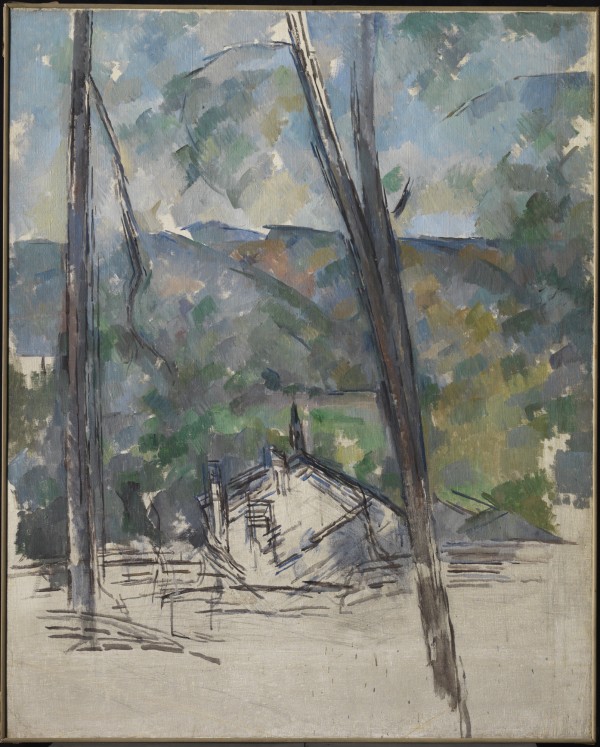Route to Le Tholonet (La Route à Le Tholonet)
Provenance
[Ambroise Vollard (1867–1939), Paris]; by descent to one of the heirs of the Vollard estate, probably Madame de Galéa (1874–1956); by descent to heir(s) of de Galéa. Purchased from a French private collector (possibly the de Galéa heir[s]) by Henry Pearlman, by 30 Sept. 1958; Henry and Rose Pearlman Foundation, after 1974.
Conservator's Note
The bottom quarter of the painting is unfinished, and here one can see a faint pencil sketch followed by a linear brush drawing in thin black, handled much like a watercolor. Just to the right of the leaning tree trunk are five parallel lines of color, each a slightly different hue, as though the artist were using this area to test certain colors that he intended to incorporate in the painting itself.
Critical Perspective
The road from Aix-en-Provence to the village of Le Tholonet passes by Château Noir, so this motif was situated in an area of the countryside well known to Cézanne. The canvas was not brought to what traditionally would be called completion; it may have been set aside to ponder further, or considered satisfactory in its present state. It reveals Cézanne’s working method: lightly sketched graphite outlines are still visible in the lower section, while the creation of forms and depth in the upper sections is achieved through touches of color that create an allover pattern.
Cézanne combined and reworked a limited number of subjects and motifs, lending density and cohesion to his oeuvre. The two trees framing an architectural motif—here, a house with pitched roof—recall other works by the artist, such as the background of his The Large Bathers in the Philadelphia Museum of Art.

